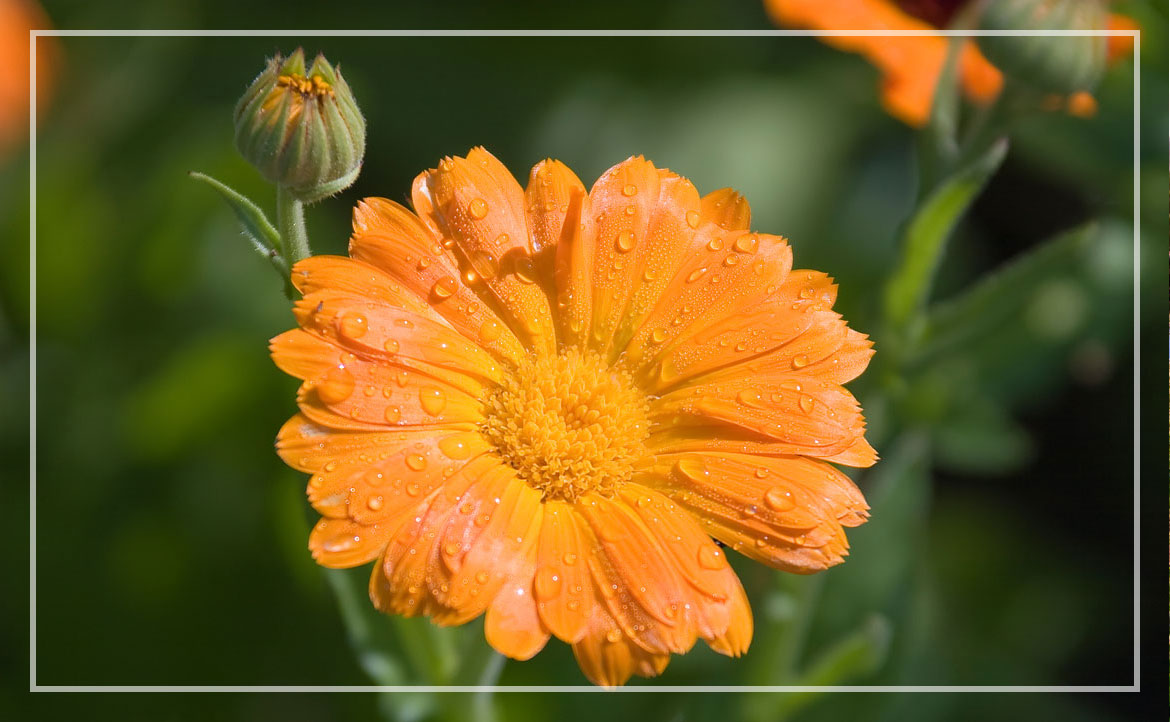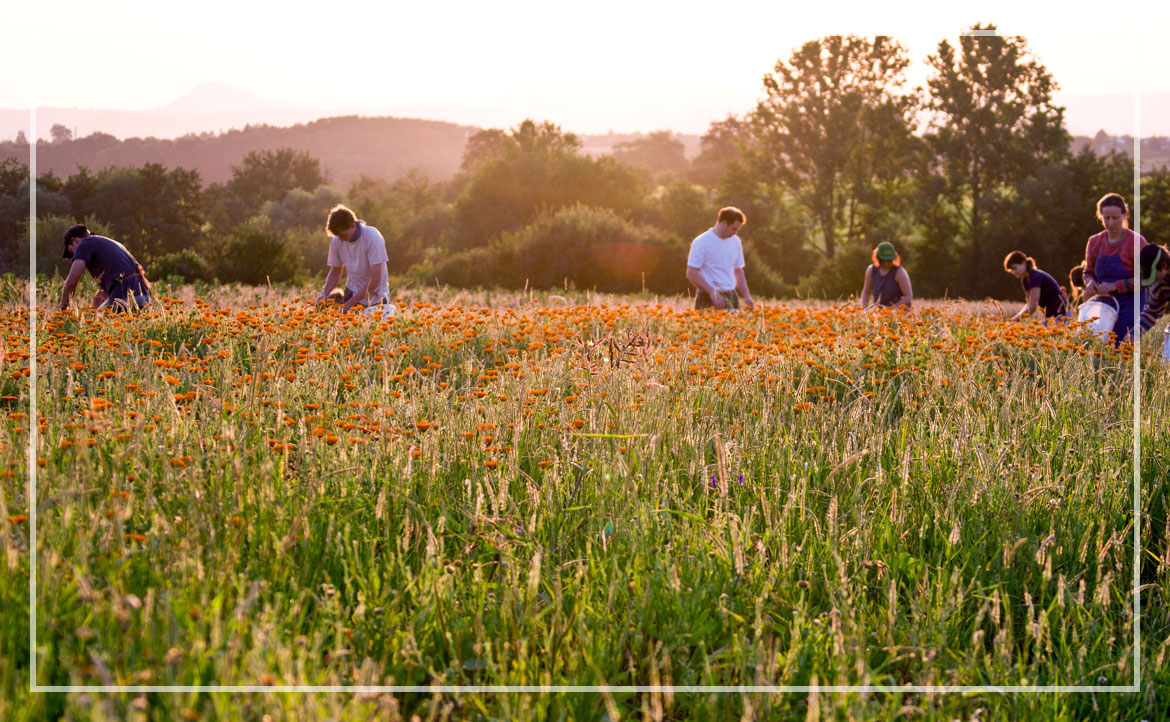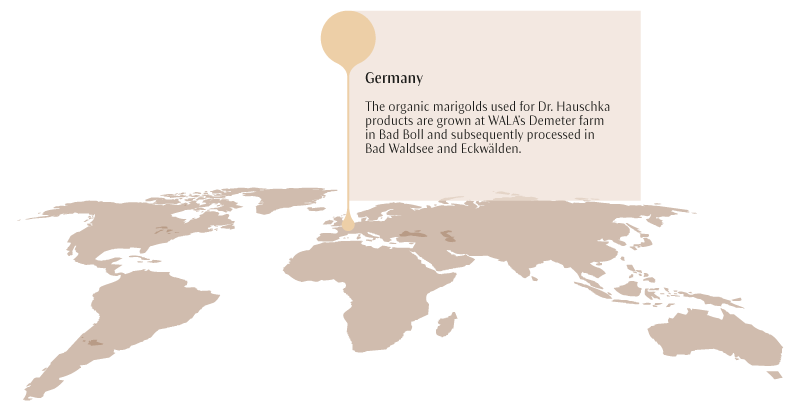Origin, cultivation and processing
The organic marigolds used in Dr. Hauschka products are grown only a kilometre from WALA on the Sonnenhof, the company’s own Demeter farm. At harvest time in June and July, Wala employees meet Sonnenhof staff in the field at sunrise. They carefully pick every single flower head by hand in order to obtain a high-quality harvested product. The heads have to be twisted off the furry stems in such a way that no stem residue remains on their underside. No automated harvester could work with this level of precision.
The freshly harvested flower heads are then processed in three ways. Firstly, some of them are sent directly to Bad Waldsee and the WALA subsidiary SaluVet, some 100 kilometres away. There, the employees use a special rhythmic WALA procedure to obtain an essence from them. The extract is obtained using a cool mixture of water and alcohol. Secondly, some of the flower heads remain at the Sonnenhof and are carefully dried using warmed external air at temperatures constantly below 40°C. A rhythmic WALA procedure is also used to obtain an oil extract from the dried marigolds. This is mixed with warm peanut oil at a temperature of 37°C (human body temperature). For the third production process, the Sonnenhof employees harvest the entire blossoming plants, including both the stems and the flower heads. WALA employees then create pressed juice from these. Unlike the plant extracts, the freshly pressed juice contains the full, undiluted character of the energy-packed plant. All substances found in the highly complex medicinal plant are contained in the substantial juice. This gives it its extraordinary effectiveness.
The different ways of processing marigold highlight its diverse properties. The aqueous and cooling essences give shape and structure. The cool, concentrated pressed juice provides assistance if the skin needs acute support. The oil extract supports the skin in its regenerative activities. All three extracts are used in different Dr. Hauschka Skin Care formulations.





















